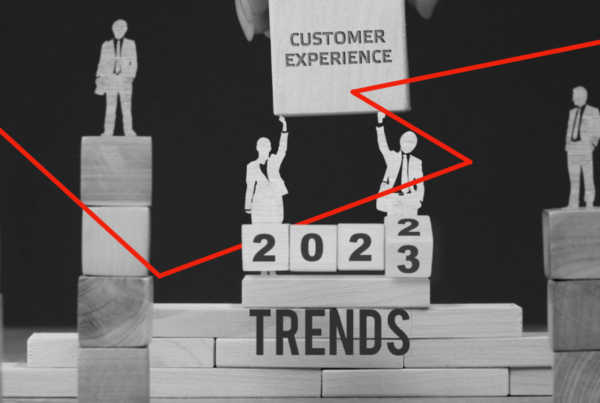Got negative reviews? Ouch. Stings, we know.
Many businesses avoid managing customer feedback in general and particularly when it comes to receiving negative feedback because it can be hard often the truth hurts. It’s also hard at times to tell which poor reviews are genuine and what must be filtered out. Some customers may leave a low star rating out of spite, some others projecting their own personal issues onto the business, some due to one specific bad experience with the brand and more.
We often praise the power of consumer reviews (i.e. the voice of the customer) and their great impact on a business’ success (or pitfalls). Now it’s even more important to emphasize the value of (the sometimes downright-honest) negative customer reviews, which are equally just as important to consider as the positive feedback.
According to Dimensional Research, 88% of shoppers’ purchase decisions are influenced by online reviews when buying – good and bad. 86% of millennials specifically claim to be influenced by negative feedback when buying a product or service. Needless to say, ratings and reviews have a great impact on business.
But what happens when business owners receive feedback yet don’t properly cater to the more critical negative ones? Well, take a look at some of the numbers here:
- Consumers would interact with businesses that have at least a 3.3-star rating.
- With just three negative reviews appearing under one search, a business can potentially lose even more customers by 59.2%.
- Within Yelp, losing one star can result in a 5 to 9% loss in sales.
Why Negative Feedback Can Be Your Friend
Critical feedback is not meant to be a bully. Negative reviews can serve as valuable information that only makes your business better. It’s all a matter of identifying first which are real reviews vs. fake reviews to create a ‘deserving’ response.
“While it’s understandable to feel defensive or be distressed about negative reviews, I’ve found that it’s best to view them as an invitation for an open conversation about what your business could be doing better.”
– Hannah Trivette, Forbes Councils Member
Feedback has been observed as a key indicator of performance and effective leadership.
Managers who especially seek out critical feedback are perceived as effective leaders by their respective networks.
“Feedback, as they say, is a gift. Negative feedback in particular can be valuable because it allows us to monitor our performance and alerts us to important changes we need to make.”
– Tash Eurich, Harvard Business Review
4 Steps on How to Actually Write a Response to the More Critical Negative Feedback
Rather than guiding your business on how to feel in response to negative feedback, it could be more useful to show your teams how to actually write in response. Then you can tailor the message accordingly.
Before we delve into the general steps, understand that most of the time, a customer needs to just ‘vent’ their feelings via bad reviews. No matter the case, timing is everything. Try to respond to any feedback as soon as possible and in a prompt manner, waiting no more than seven business days. Customers who receive an efficient and first-contact answer to their complaint are twice as likely to repeat business with you.
Moreover, it’s all about reworking your mentality to perceive negative feedback as an opportunity, rather than a challenge, towards helping you improve your customer experience. You’ll slide into writing a response in a more calm and collected tone with that in mind.
Step 1: Address customer names
First thing first, if possible, address the customer by their first name to convey a more ‘tailored’ message. Rather than seeming ‘robotic’ with the same response to every bad review, you want to show your attention to detail, such as their name or any customer data you have on them. Avoid any “Hey there” or “Dear customer.”
Check their profile associated with the feedback to learn a bit about them, such as their hometown, current location, age, etc. An effective voice of the customer strategy requires more than just listening but understanding the story or sentiment behind the “Don’t buy from them!” or “Your product sucked!”
Step 2: Be more sincere in your response to negative reviews
Although strange, show empathy by specifically thanking him or her for bringing the problem to your attention. How else you can convey empathy is, at the same time, slide in an apology. You want to show a bit of remorse for their negative experience with your product or service and that your company can do better in the future. Consider the example below:

Hi Alexis,
Thank you for your feedback. Here at Travel2Go, we’re committed to delivering high-quality gear. However, I’m sorry to learn about your experience with one of our products. I’d like to learn more about your situation and get that replacement quickly sent to your home. Please contact my team at [email protected] at your earliest convenience so we can quickly resolve this. It would be greatly appreciated, and we look forward to helping you soon.
Have a great day,
Jaime
Step 3: Acknowledge the problem and encourage contact
What’s more, offer the author of the bad review a way in which you want to learn more about their dilemma by providing your business phone number or email address, preferably one that is easily reachable (see again the example above). It’s important to try resolving the issue on another platform, one that is more private and secure, as you don’t want to expose any of the customer’s confidential details. Mind also that others may publicly see any response to negative feedback. So, craft your apology and explanation carefully.
That said, depending on the customer’s issue, you may need to do a bit more than apply our generic guidelines, such as explaining the causes of failures in your product or service. An example from Tasha Eurich of Harvard Business Review:
Thank you for your review. Sometimes, it can be hard to understand all of the details of insurance benefits. While our staff discusses insurance coverage with our patients, sometimes we don’t receive certain forms that are necessary for us to process a claim. If we don’t receive these documents from the patient, we cannot guarantee coverage. However, there are some ways to resolve the matter. We apologize for the inconvenience and encourage you to reach out to us.
In another example

Dear Melitza,
How are you? We appreciate your feedback! I’m genuinely sorry to hear about your recent experience with our front desk. Please be assured that we try our best to maintain a highly professional and knowledgeable team. We don’t want to lose you as a patient and will gladly welcome you back any time.
I’d appreciate it if you could first describe your situation better by calling me at [phone number] whenever you can. I will also keep my staff well informed of your feedback and others similar to it in order to maintain a high-quality service. Looking forward to hearing from you and hope to see you again soon!
Step 4: Monitor and follow up on the critical bad reviews
It’s not enough to simply respond to negative feedback that can help improve your business. You must monitor the review afterward, such as checking whether the author has replied, has edited their review (if lucky, removed it entirely), or has yet to reply. If the latter is the case, give about five to seven business days to follow up with the customer.
Hi Melitza,
I hope you are doing well. I haven’t heard from you yet since you left the recent review of our team. Please get back to me at your earliest convenience, and you can even go to this short form to quickly fill in your response -> [URL of contact form]
If their number is on file, consider calling the customer directly following their complaint or if you’ve not heard from them. This ensures that you are eager to help them and are attentive to their needs.
Takeaway on Bad Feedback
Overall, identify first whether a negative customer complaint is fake or genuine and thus, deserving of your business’ attention. Then, cater to the critical feedback following the four general steps laid out above. Although a bit of copying and pasting won’t hurt you, try to write in several sentences in your own words that would best explain the reason behind the customer’s problem. Other potential customers may also be reading the public complaints. Certainly, mind the time in calling or responding to negative reviews.
Who knows, these small steps may go a long way in helping the customer reconsider and, if possible, adjust or remove the negative feedback from the review site. Even more so, it enables your brand to improve the customer experience.




